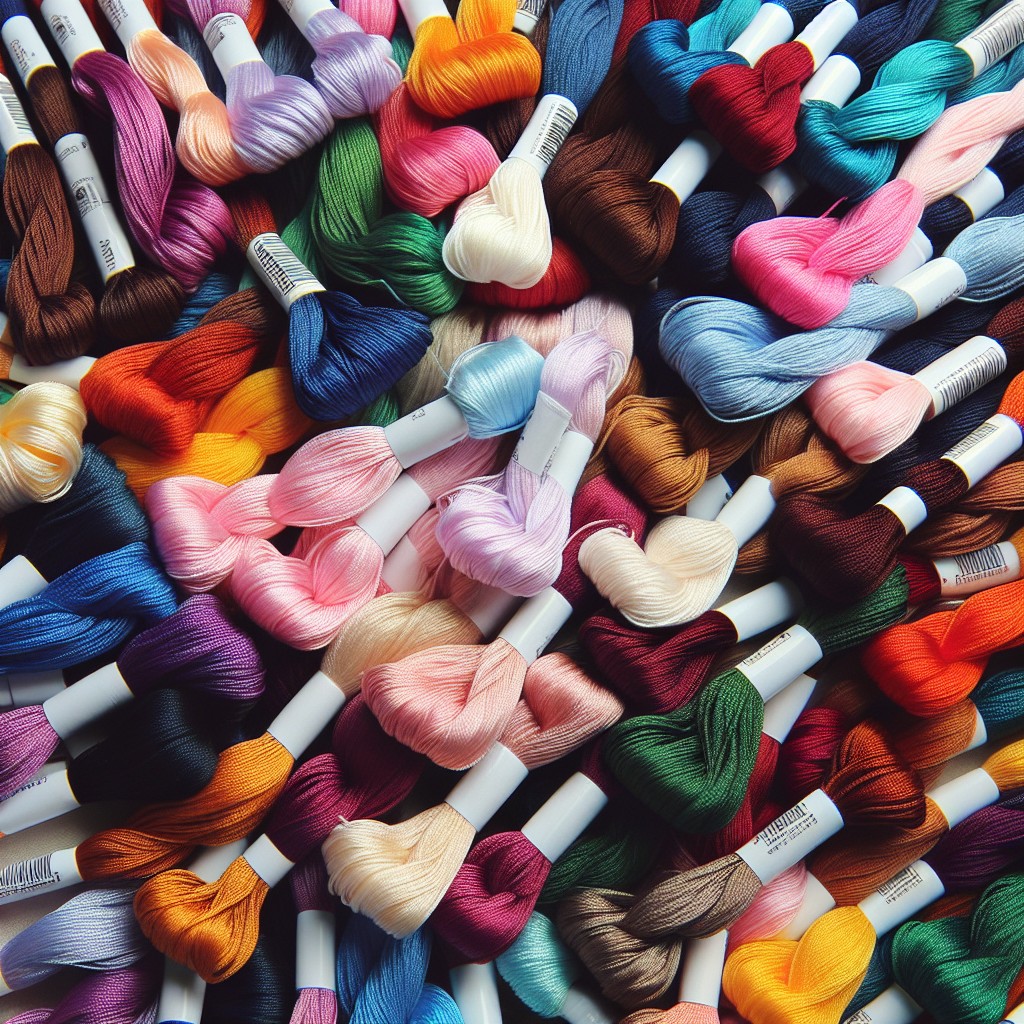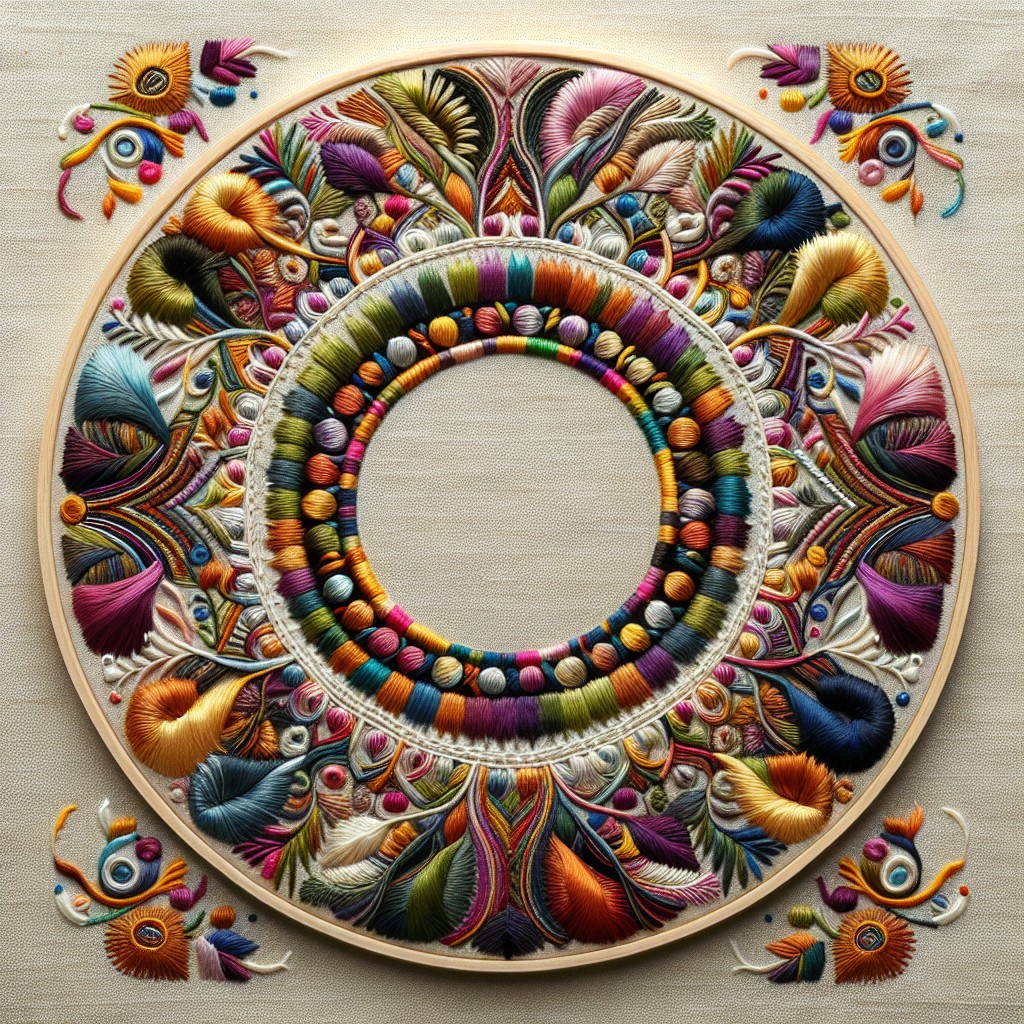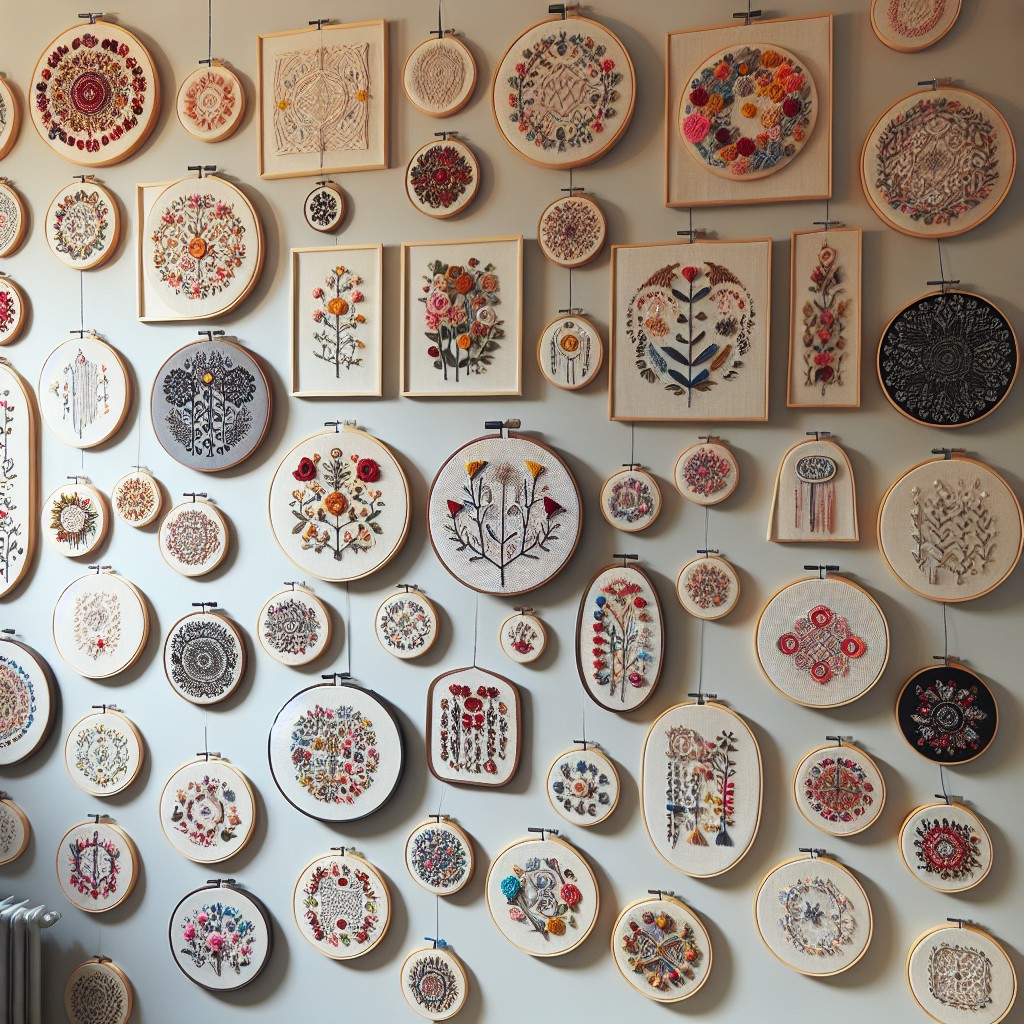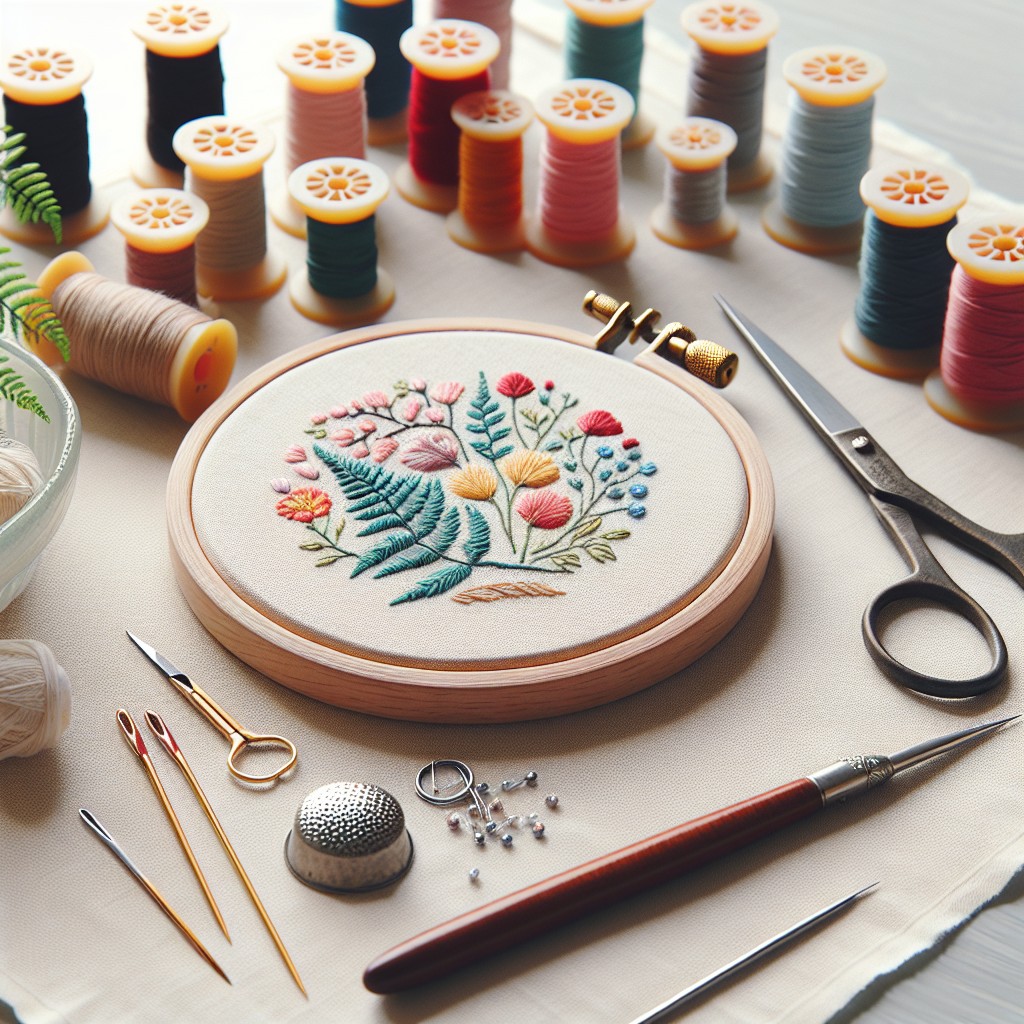Learn the art of violet embroidery with this guide, showcasing techniques for stitching this elegant floral design onto your favorite textiles.
Key takeaways:
- Consider shade and tone when choosing floss for violet embroidery.
- Floral motifs and geometric patterns work well with violet tones.
- Satin Stitch, French Knot, Long and Short Stitch, Chain Stitch, and Backstitch are effective stitch techniques.
- Incorporate violet embroidery into home decor through wall art, throw pillows, curtains, and table runners.
- Violet has historical significance as a color of royalty and is used in liturgical vestments.
Violet Embroidery Floss Selection
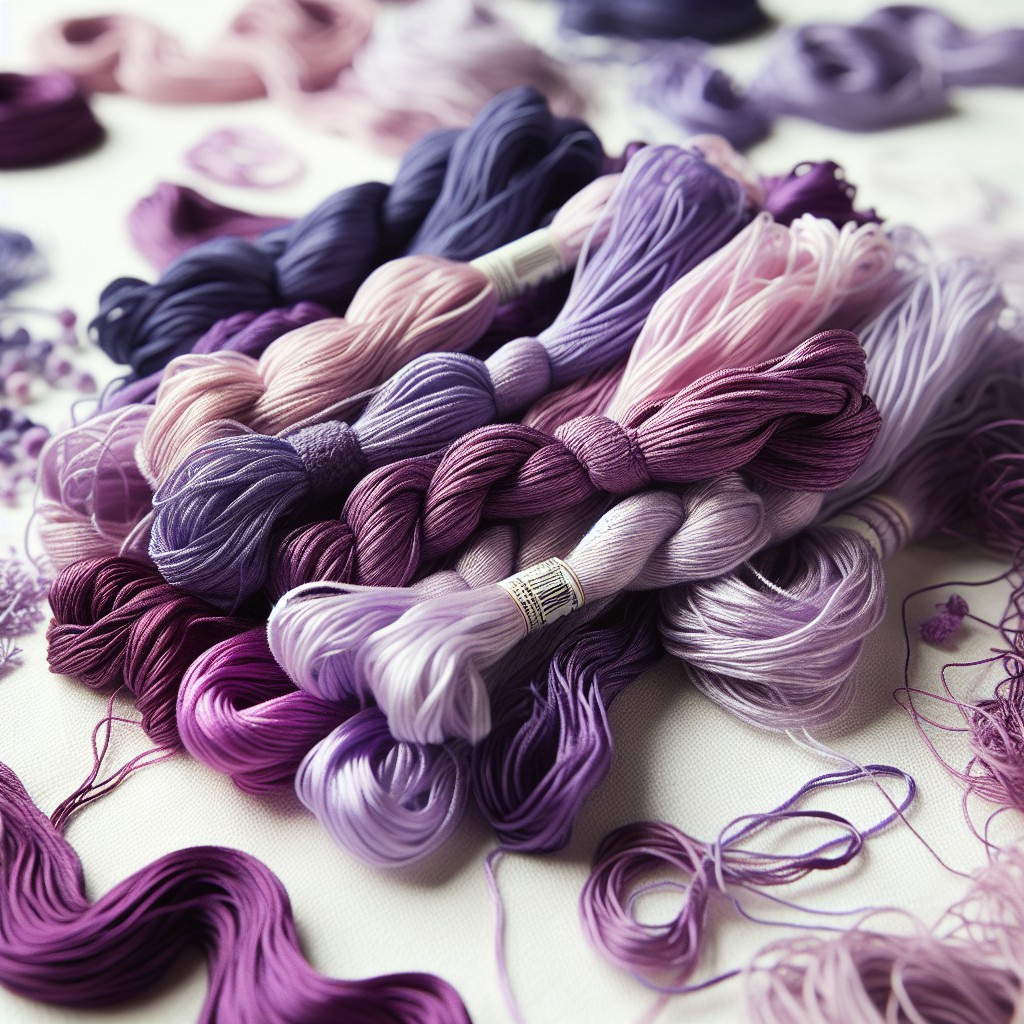
When choosing floss for violet embroidery, consider the shade and tone that will best suit your project. Violet hues range from light lilac to deep eggplant, and each can create a different aesthetic impact. Cotton floss is popular for its versatility, while silk floss provides a luxurious sheen suited for special pieces.
The thread count in your embroidery fabric can impact your floss selection, as higher counts may require finer floss to achieve the desired level of detail. If blending shades for a gradient effect, select colors that naturally progress from light to dark.
Regarding brands, DMC and Anchor offer extensive color palettes, making it easy to match the specific violet you need. Some projects might call for variegated floss that includes a range of violet shades within a single thread for a dynamic effect. Always consider the colorfastness of the floss to ensure your artwork remains vibrant after washing.
Design Patterns Featuring Violet Tones
Floral motifs dominate when incorporating violet hues into embroidery, with lavender sprigs, violets, and lilacs providing a natural subject that beautifully complements the color’s softness. These botanical designs can range from simple outlines to intricate, shaded pieces that mimic nature’s gradients.
Geometric patterns also benefit from violet tones, particularly when juxtaposed with complementary colors like yellows or greens. Whether it’s a series of triangles, diamonds, or tessellating shapes, using different shades of violet can add depth and interest.
For a whimsical touch, fairy tale and fantasy themes often make use of violet for its association with magic and mystique. Imagine embroidering dragons, castles, or mythical creatures with violet accents, bringing an element of enchantment to the work.
In cultural designs, violet maintains a royal connotation. Patterns inspired by historical tapestries or traditional garb can leverage violet for its regal presence, making it suitable for projects aiming to evoke a sense of heritage and luxury.
Lastly, contemporary abstract designs with violet can create stunning visual pieces. Whether it’s through soft watercolor-style embroidery or bold, minimalist lines, violet shades can convey emotion and movement in modern patterns.
Stitch Techniques for Violet Embroidery
To highlight violet hues in your embroidery, consider these stitch techniques that showcase different textures and shades effectively:
1. Satin Stitch: Ideal for filling large areas with smooth, silky violet. Keep the stitches close together and parallel for a luxurious look.
2. French Knot: Perfect for adding texture or creating a field of lavender. Vary the number of wraps to adjust the size of the knots.
3. Long and Short Stitch: This stitch works well for creating gradients or shading effects with different violet tones, blending them seamlessly.
4. Chain Stitch: Use this for outlining designs or adding a raised, decorative border. It imparts a dimensional aspect to your violet elements.
5. Backstitch: Simple yet powerful for defining sharp, precise lines or adding fine details to your violet embroidery projects.
6. Lazy Daisy Stitch: Mimic the appearance of violet petals or individual flowers with this looped stitch that’s both charming and easy to master.
By incorporating these stitches into your work, you can explore the full range of possibilities that violet embroidery threads offer, from subtle shading to striking textures. Choose your technique based on the effect you wish to achieve and watch your violet embroidery come to life.
Showcasing Violet Embroidery in Home Decor
Violet embroidery adds a luxurious touch to any space, and there are several chic ways to incorporate it into your home’s aesthetic.
Consider framing finished pieces to create unique wall art that draws the eye and serves as a conversation starter. You can also embellish throw pillows or curtains for an understated hint of color and texture in your living areas.
For a more functional application, violet embroidered table runners or placemats can elevate your dining experience.
In bedrooms, a delicately stitched lavender design on duvet covers or pillowcases can contribute to a soothing ambiance.
To balance the boldness of violet, pair it with neutral tones like grey and white or complement it with soft greens and blues for a harmonious color palette.
Historical Significance of the Color Violet in Embroidery
Violet has been a color of prestige and power throughout history, often associated with royalty due to the rarity and cost of the purple dye originally made from the shells of sea snails. In medieval times, garments adorned with violet embroidery signified wealth and status, as the color was challenging to produce and, thus, highly prized.
In ecclesiastical contexts, violet and purple feature prominently in liturgical vestments, particularly during the seasons of Advent and Lent in Christianity, symbolizing penitence and preparation.
During the Victorian era, violet embroidery experienced a revival as part of the language of flowers, where it represented modesty and devotion, a theme that was popular in domestic needlework.
The color also has cultural significance in East Asian embroidery, where violet florals often convey sentiments of nobility and refinement, embedded in traditional garments and textiles.
Today, violet continues to enrich embroidery designs, offering depth and elegance to modern patterns and projects while echoing its rich philosophical and historical connotations.

